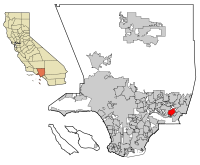
Photo from wikipedia
Juglans regia L. is the most widely cultivated and economically important species of edible nuts. Iran is known as a center of origin of genetically rich walnut germplasm and expected… Click to show full abstract
Juglans regia L. is the most widely cultivated and economically important species of edible nuts. Iran is known as a center of origin of genetically rich walnut germplasm and expected to be found a large diversity within Iranian walnut populations. A detailed population genetic of local populations is useful for developing an optimal strategy for in situ conservation and can assist the breeders in crop improvement programmes. The main aim of the present study was genetic fingerprinting of 20 Persian walnut populations, including 3 wild and 17 cultivated populations by using SCoT markers. We also aimed to evaluate the discriminating power of SCoT markers in these populations. The correlation between genetic distance and geographical distance has also investigated. The results showed that SCoT marker has a good discrimination power and can differentiate the studied populations. This marker can be used to evaluate genetic diversity, identify genotypes and DNA finger printing of Persian walnut populations. The present study also revealed that there are at least two genetic groups in the studied Persian walnut populations and the geographical features of cultivated populations can be influenced grouping of them. The studied populations differed genetically and showed isolation by distance.
Journal Title: Genetic Resources and Crop Evolution
Year Published: 2020
Link to full text (if available)
Share on Social Media: Sign Up to like & get
recommendations!